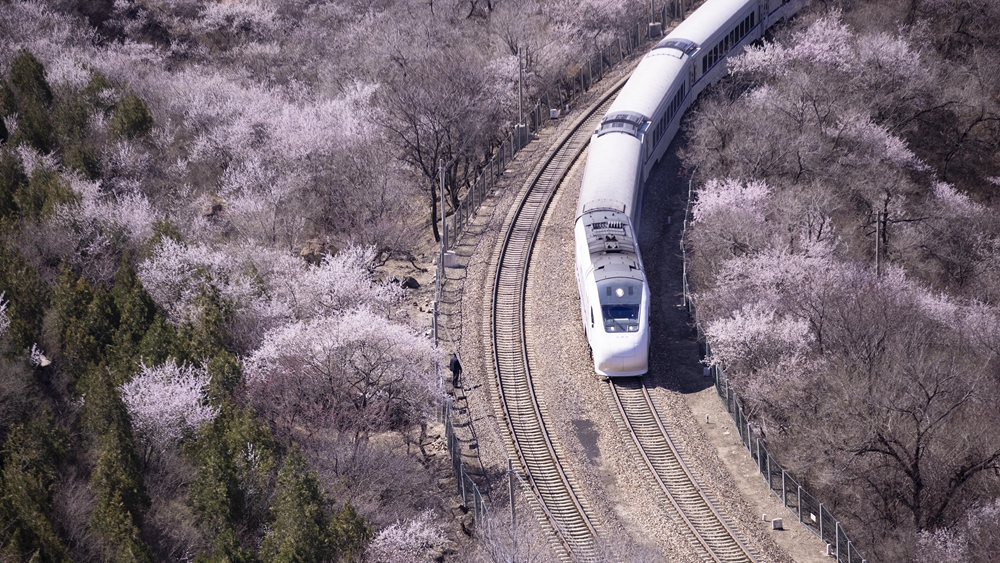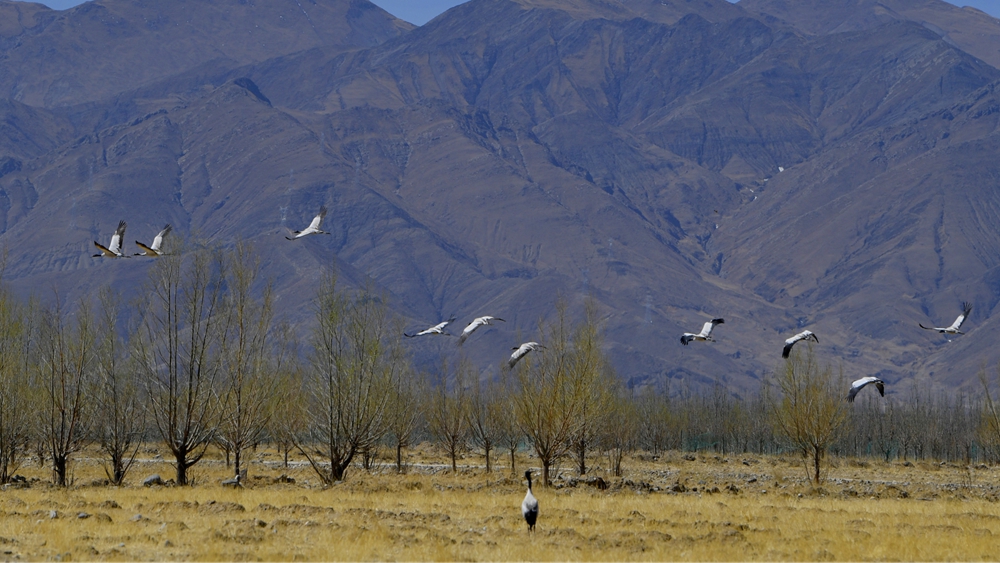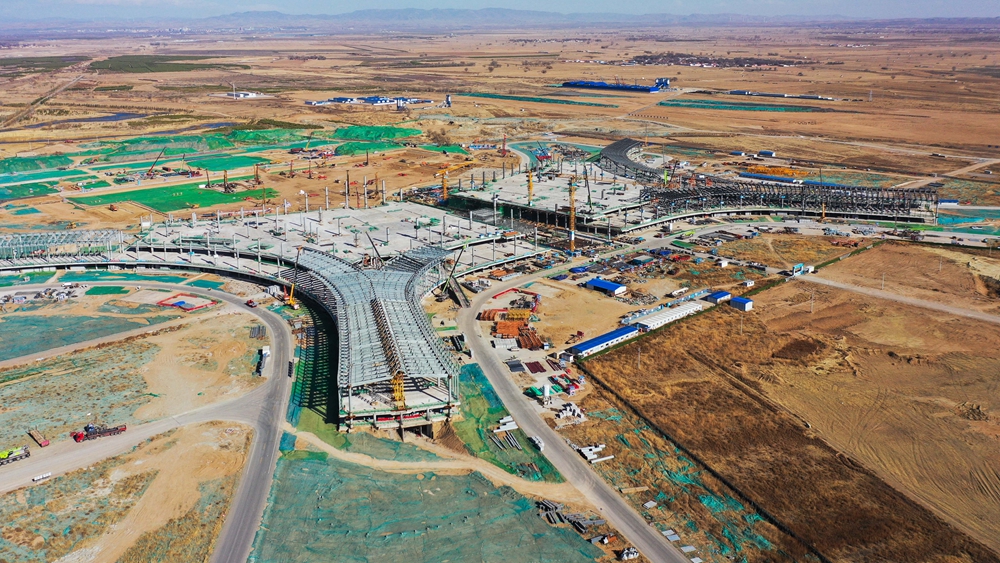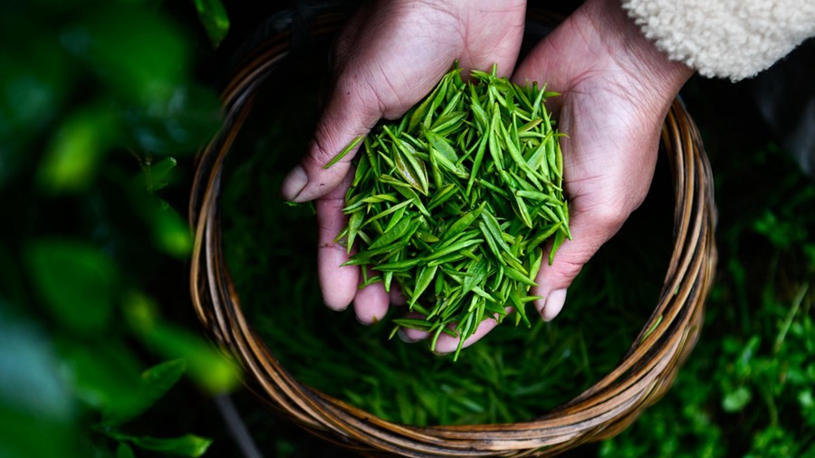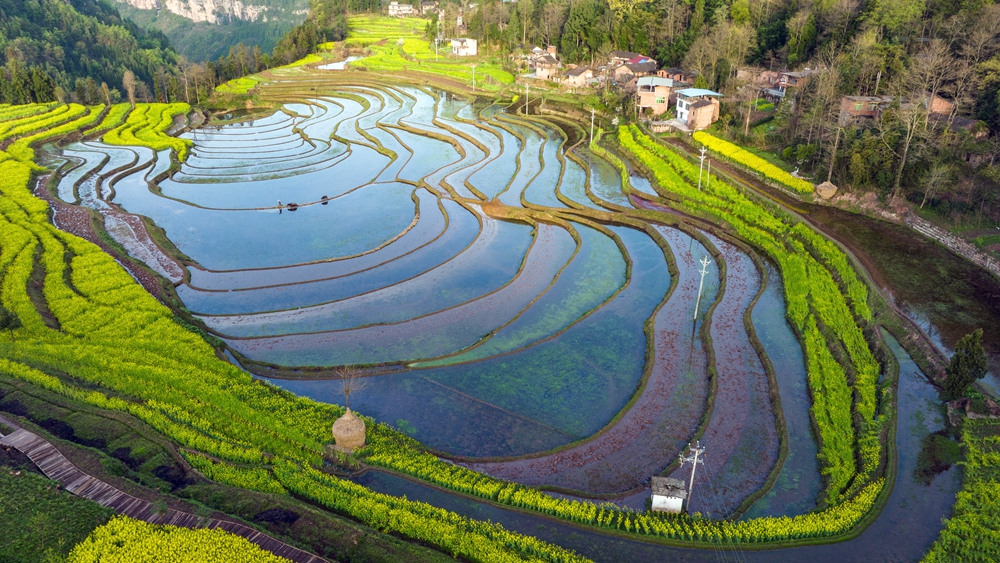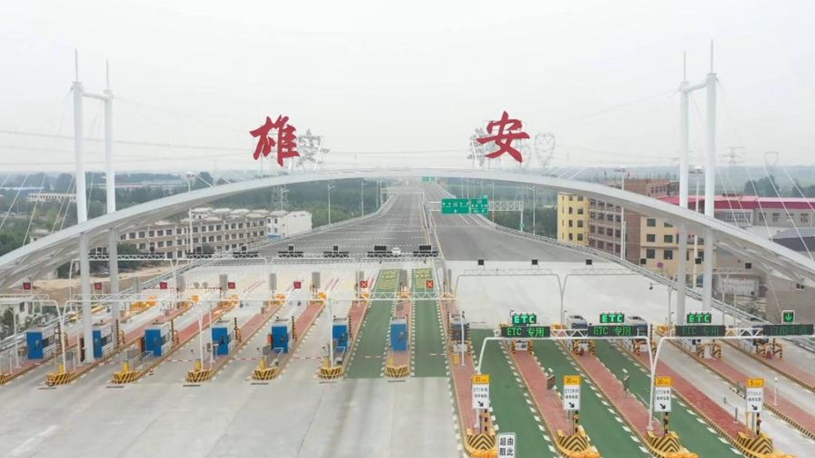* The passing of Chunfen, or the spring equinox, on March 20, signaled the start of China's busy spring farming season.
* China has set a target to ensure the full-year grain output stays above 650 billion kg in 2022. Strenuous efforts nationwide are being made to guarantee domestic grain supply.
* The country has shown great confidence in guaranteeing stable domestic production and supply amid uncertainties in the external environment.
CHANGSHA/HARBIN, April 4 (Xinhua) -- The passing of Chunfen, or the spring equinox, on March 20, signaled the start of China's busy spring farming season, with modern farm machinery working full tilt at plowing and other essential tasks.
Strenuous efforts nationwide are being made to guarantee the country's grain security amid the global climbing up of grain prices.
With increasing investment in agricultural science and technology and the promotion of superior grain varieties, China has shown great confidence in guaranteeing stable domestic production and supply amid uncertainties in the external environment.
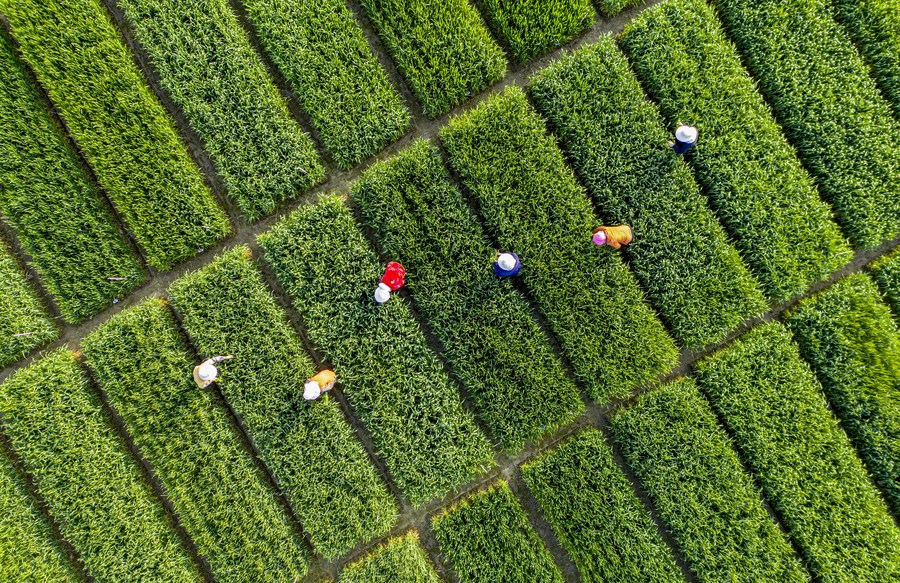
Aerial photo taken on March 30, 2022 shows people weeding in a field at Baihu Township in Lujiang County of Hefei, east China's Anhui Province. (Photo by Zuo Xuechang/Xinhua)
Of late, rumbling farming machines have been shuttling back and forth on a little patch of arable land at the juncture of Dashiwan and Huayuandong villages, in the city of Yiyang, in central China's Hunan Province.
Thanks to the local farmland protection and supervision authorities, the arable land, once converted into a fishpond for leisure fishing, has once again witnessed the bustling activity of spring farming.
Since 2020, Yiyang has vigorously expanded its arable land for agricultural production, adding over 342 hectares.
Similar basic guarantee measures to ensure that spring farming proceeds in good time have been rolled out across the country.
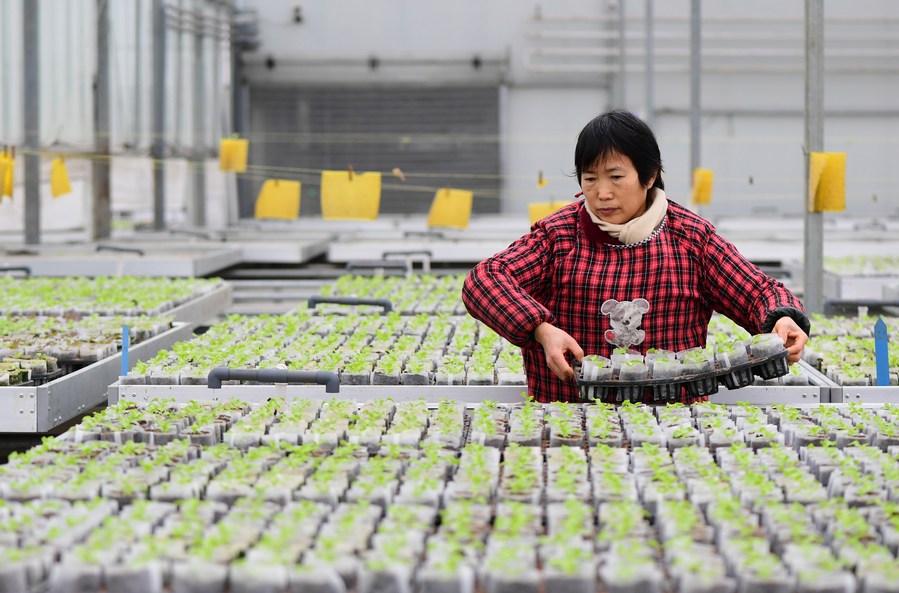
A worker arranges vegetable seedlings at an agricultural technology enterprise in Huagang Town of Hefei city, east China's Anhui Province, Feb. 11, 2022. (Photo by Xu Yong/Xinhua)
Heilongjiang Beifeng Agricultural Means of Production Corporation has a market share of about 50 percent in the province's fertilizer market.
The price of fertilizers has been on the rise this year, generally up over 30 percent compared to the previous year, especially potash fertilizers, which have doubled during the period, said Liu Yanming, the company's general manager.
In response to the rising prices of relevant production materials, the central government has allocated 20 billion yuan (3.14 billion U.S. dollars) to issue one-time subsidies to the farmers growing grain across the country. The country also released 1 million tonnes of national potash fertilizer reserves to the domestic market to meet production needs during this year's spring farming period.
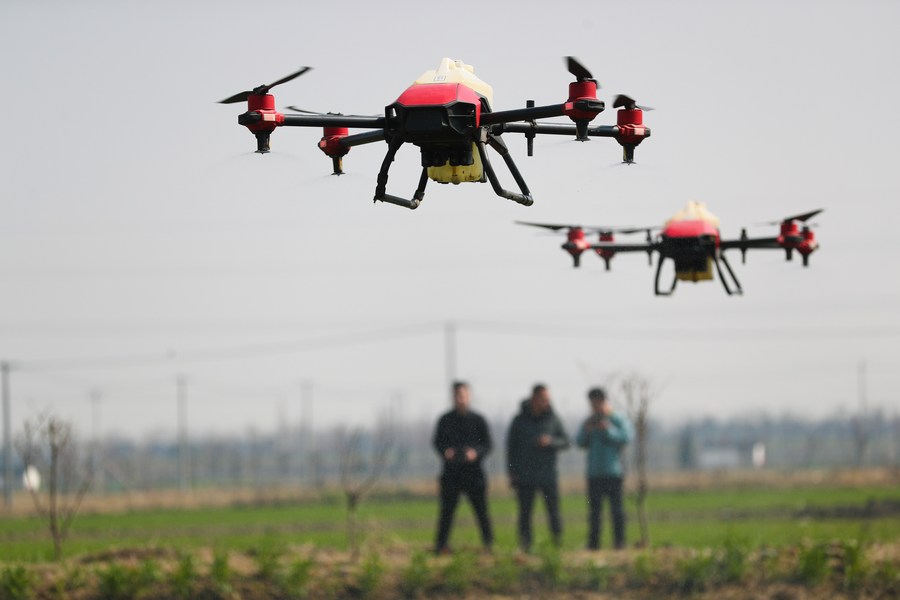
An agricultural technician operates a drone to fertilize seedlings in Hemu Village of Deqing County in Huzhou, east China's Zhejiang Province, Feb. 25, 2022. (Photo by Wang Zheng/Xinhua)
New technological innovations have also been adopted to develop superior grain varieties.
"This year, we've conducted tests on over 20 new soybean varieties," said Luan Xiaoyan, a seed-breeding expert at the soybean research institute of Heilongjiang's provincial academy of agricultural sciences.
As the country's largest soybean production base, Heilongjiang sees its soybean planting area accounting for more than 40 percent of China's total. Local agricultural authorities have recommended 23 new superior soybean varieties for breeders over the years, helping boost the yields.
A novel soybean variety called "Heinong 84," which was developed by Luan and her team, is their major breakthrough in integrating high-quality traits such as high yield and resistance to pests, and was granted national approval last year.
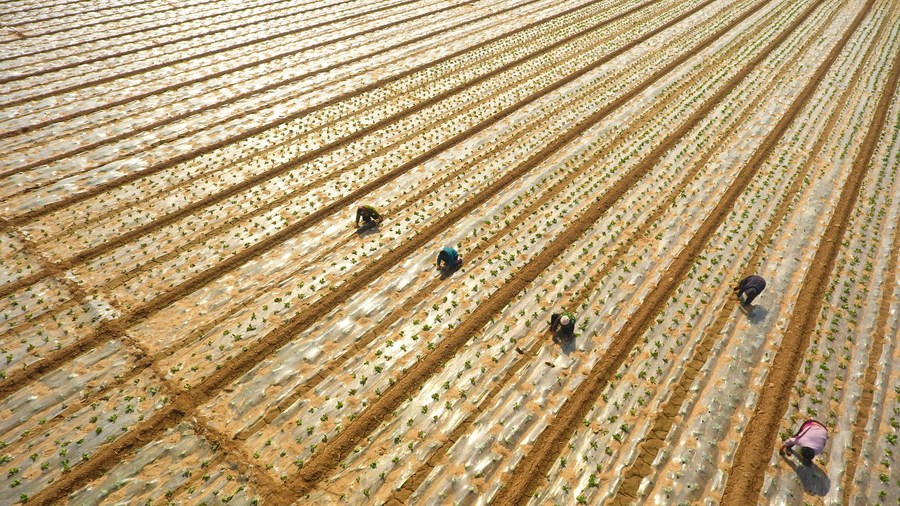
Aerial photo taken on March 28, 2022 shows farmers working in the fields in Xinghuliu Village, Jiazhai Township of Liaocheng City, east China's Shandong Province. (Photo by Zhao Yuguo/Xinhua)
"It was beyond my expectations when the average yield per mu (one mu equals about 666 square meters) exceeded 200 kg," said Zhang Xianwu, a farmer in Mulan County, Heilongjiang Province. Zhang planted over 530 hectares of the "Heinong 84" soybean last year.
This year, Zhang has signed another contract with Luan to expand his planting area by 2,000 hectares of "Heinong 84."
At the Qixing farm in Heilongjiang, Liu Yongbing, who owns over 20 hectares of rice fields, has adopted a new seedling raising technology this spring. With constant temperature and humidity provided by a dark room, the pregermination procedure can be reduced from the previous seven to eight days to a mere two days.
Covering over 70,000 hectares in area, the farm has also integrated China's BeiDou Navigation Satellite System, 5G network, robots and other cutting-edge technologies with its farming machinery system. Now it has taken the lead in remote unmanned control of its intelligent agricultural machinery, according to Liu.
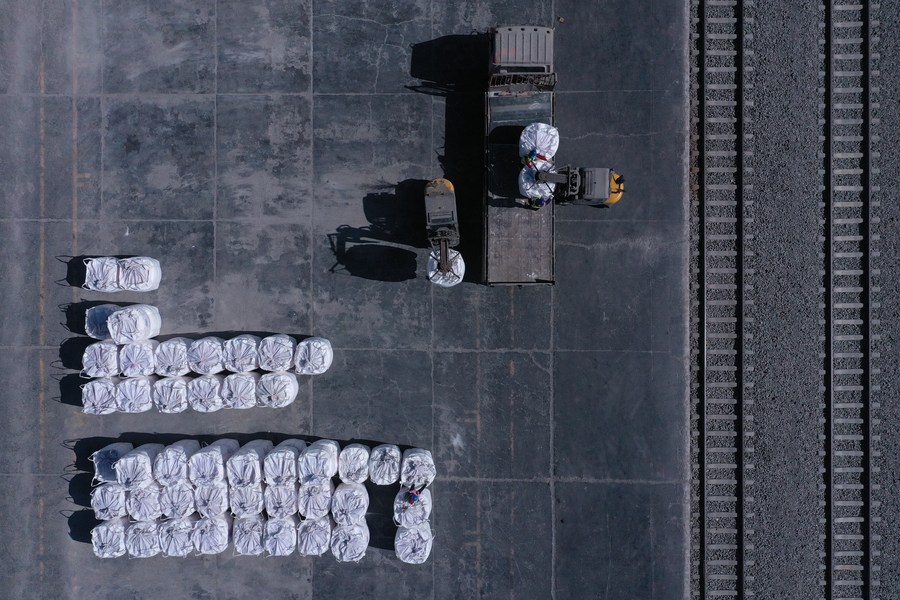
Aerial photo taken on April 1, 2022 shows staff members loading potash fertilizer onto a truck at Qinghai Salt Lake Industry Co., Ltd. in northwest China's Qinghai Province. (Xinhua/Zhang Long)
Hunan's Yongshun County, in the hinterland of the Wuling Mountain range, has introduced the latest rice sowing technology, which can evenly arrange seeds on a special non-woven fabric for the raising of rice seedlings.
The new practice can shorten the seedling raising cycle while improving the quality of the seedlings. "We now can grow more than double the previous quantity of rice seedlings in the patches," said Huang Wenjun, a local farmer in Shangping Village of Yongshun County.
China has set a target to ensure the full-year grain output stays above 650 billion kg in 2022. Last year, China's grain output hit a new high of 683 billion kg, with grain farmland exceeding 117 million hectares.
(Video reporter: Tang Tiefu, Li Xiaobo, Feng Yuanyuan, Ding Lei, Li Zhihao, Zhao Ge; Video editors: Zheng Xin, Cao Ying, Zhang Yucheng.) ■

